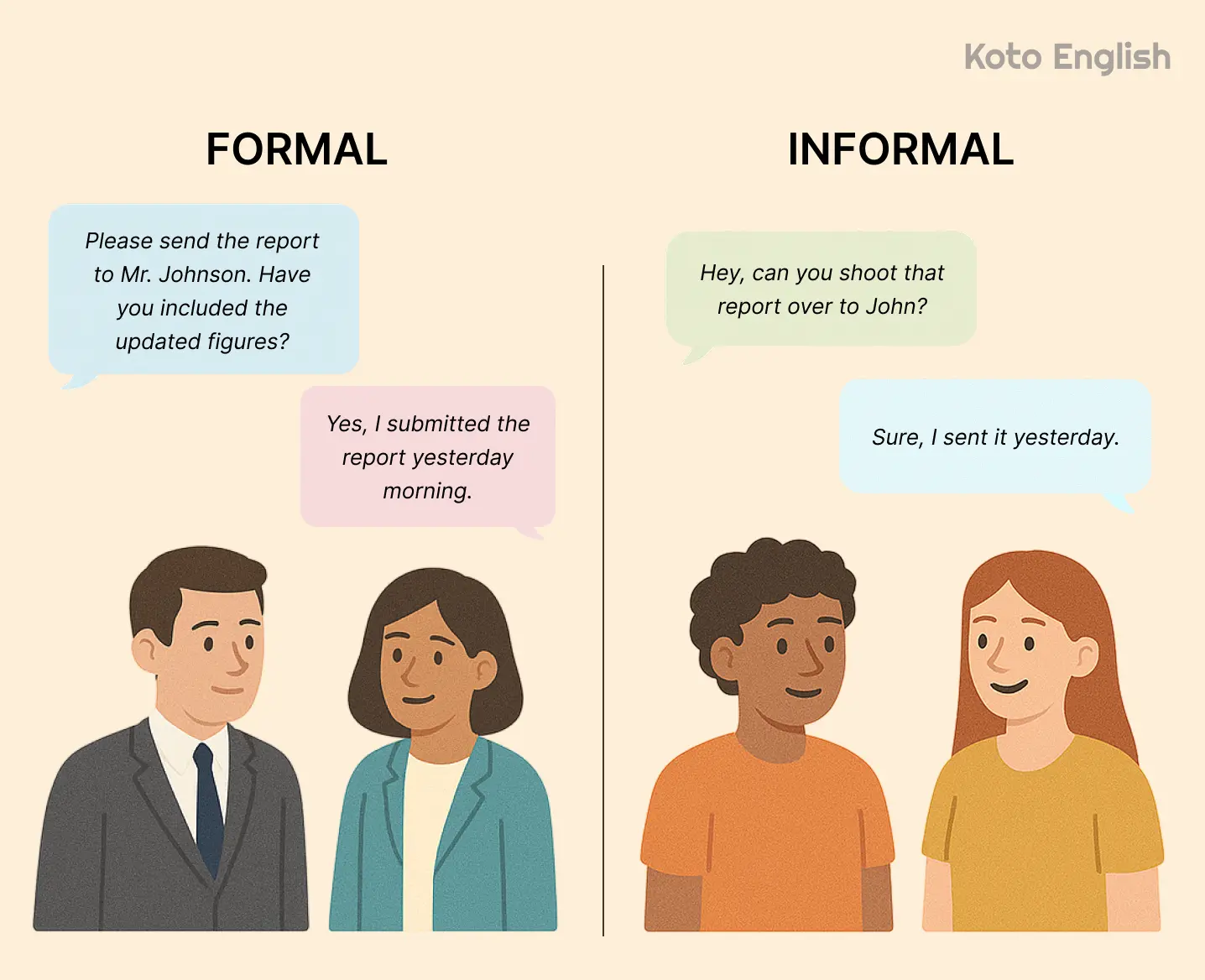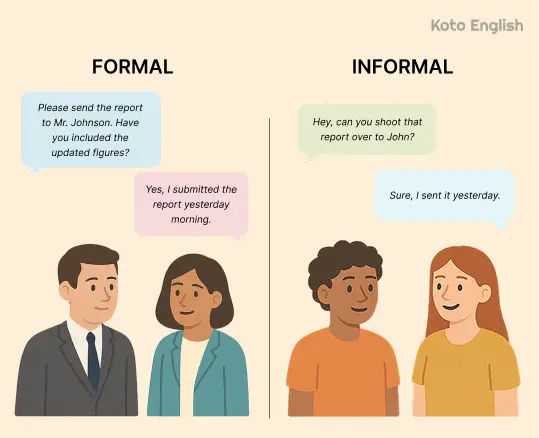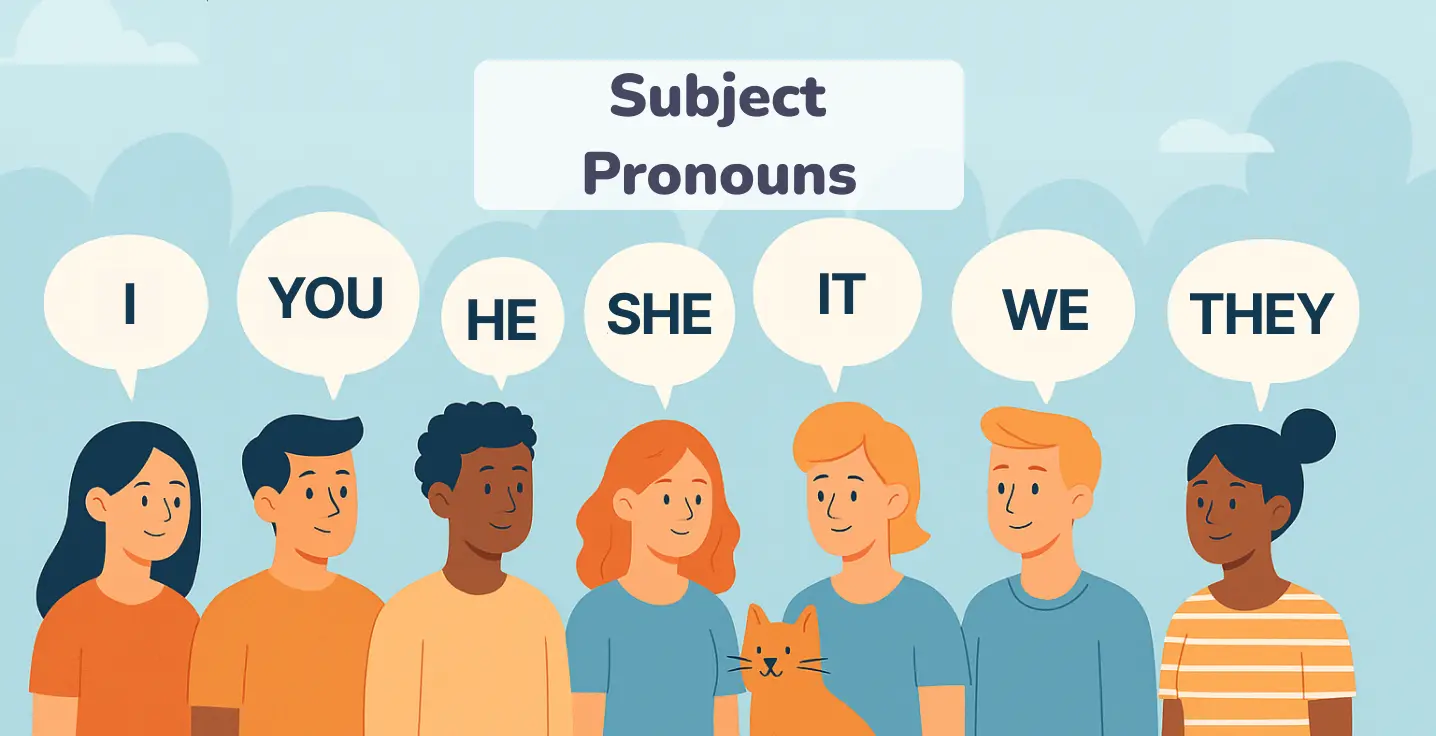What is a gender pronoun?


If you want to speak naturally, without multiple repetitions and misunderstanding, gender pronouns help you provide clear and accurate answers, eliminating uncertainty. Pronouns,
Before
After
The extensive list of gender pronouns include these options for man (he), woman (she), and gender-neutral singular (they).
| Subject | Object | Possessive adjectives | Possessive pronouns |
|---|---|---|---|
| he | him | his | his |
| she | her | her | hers |
| they | them | their | theirs |
This list is not complete, as people can create their own gender pronouns in English and ask you to call them accordingly.
Level up your English with Koto!
When to use them correctly
As you have discovered the gender pronouns definition, let’s move on to the nuances of usage. The variety of options shouldn’t scare you, as there are well-organized rules you need to follow to communicate without mistakes.
- Choose the pronoun based on the person’s identity. He/him for a man, she/her for a woman, they/them for plural groups of both men and women, or as third-person singular. To be more polite, you can clarify what pronouns to use with a particular person.
- Take its role in the sentence into account. Depending on the gender pronoun meaning, it can serve different purposes. Choose subjective pronouns for those who act, and objective ones for those to whom this act is directed.
- Stick to neutral pronouns when you don’t know a person’s gender. In English, words don’t change forms based on gender as in some other languages so, if a profession or title is he or she in your language, it doesn’t apply to English. Use they/them if it is in general or when the gender is unknown.
- Don’t use “it” with people. He, she, or they are the classic set of pronouns. It refers to non-alive items and animals, so it can’t be matched with people.
How to use gender pronouns?


Now, we are going to explore some scenarios of the gender pronouns examples’ usage, so you could know what to say when you write serious papers, talk with relatives and friends, and communicate with colleagues at work.
In formal writing
What are the gender pronouns’ rules in official communication? In order not to be outdated, old-fashioned when you write some descriptive or analytical materials, be mindful of the following:
- Try not to guess and assume. If you are not sure whether you are talking about a man, a woman, or a non-binary person, use standard neutral options to avoid misunderstanding.
- Be inclusive if you speak in general. Are you trying to catch the attention of different groups of people? Then, don’t leave them behind by mentioning only one gender. When it is a generic complex, value all individuals.
Example:
Tip: Either a man or a woman can be a business owner, which is why we need to be neutral.
In daily conversations
Having conversations with friends, you have a bit more freedom that is not restricted by grammar rules, so you can refer to people with the pronouns they choose for themselves:
Example:
In professional settings
The gender pronouns list in your working environment depends on your workplace, but it is always safe to follow these ideas:
- Don’t ignore people’s preferences. At work, if you know that your boss, colleagues, or clients use specific gender pronouns, take into account their wishes in order not to be rude.
- Be consistent with all the pronouns. If you say “they,” don’t forget to refer to people as “them” when an action is directed at them, or theirs, indicating that something belongs to them.
Example:
Examples of using a gender pronoun in context
To make everything crystal clear, we have gathered gender pronoun examples based on their role in a sentence.
He, she, they can be used in place of the subject, so they are typically at the beginning of a sentence. Look at some examples of usage:
| Subject Pronouns | Example |
|---|---|
| She |
|
|
|
|
| He |
|
|
|
|
| They |
|
|
|
These pronouns, him, her, and them, are chosen in place of objects and are usually seen at the end of a sentence.
| Object Pronouns | Example |
|---|---|
| Her |
Could you call
|
|
I don’t know
|
|
| Him |
Do you need to meet
|
|
Do you often see
|
|
| Them |
You must tell
|
|
My brother cooked this dish for
|
The following pronouns — hers, his, and theirs — are perfect choices to write or say instead of repeating an item that is known, when highlighting its belonging to someone. Possessive means that someone owns a thing:
| Possessive Pronouns | Example |
|---|---|
| Hers |
This house is
|
|
That decision is
|
|
| His |
The mistake is
|
|
The car you saw is
|
|
| Theirs |
The children are
|
|
We have a bike, but
|
Common mistakes
So many nuances of gender pronoun definition — different types of pronouns, various forms, each of which you need to remember and use correctly. Uncover some frequently made mistakes to know what people misunderstand, to work a bit more on these areas:
Choosing the wrong form of a pronoun
Even intermediate-level learners can sometimes forget what to select when they speak about people, especially if the word is not typically feminine or masculine (like boy and girl or man and woman).
|
She is a very smart boy.
|
He is a very smart boy.
|
|
He is my older sister.
|
She is my older sister.
|
Using he or she to a group of people
You can say they/them instead of he/him or she/her, but it doesn’t work in the opposite way. If you address several people at the same time, they and them are the most appropriate choices.
|
She are very patient.
|
They are very patient.
|
|
They need to make her own decisions.
|
They need to make their own decisions.
|
Shifting between various pronouns for one person
When calling someone in a way, you need to continue this with object and possessive pronouns, using them when needed.
|
They will do it by herself.
|
She will do it by herself.
|
|
He bought her first flat.
|
He bought his first flat.
|
Using gender pronouns with items
In English, inanimate objects, such as chairs, tables, phones, computers, countries, and companies, are typically not said with words that indicate gender, because it is not natural.
|
Rome is perfect and he is so old.
|
Rome is perfect and it is so old.
|
|
This book is a bestseller. She beats all records.
|
This book is a bestseller. It beats all records.
|
Summary and actionable tips
With detailed rules and multiple examples of a gender pronoun, we showed you how and where you need to use a specific pronoun. It can seem that there are too many nuances, but with practice you will easily memorize all the points. Just remember:
- Read a lot and note how native speakers use pronouns.
- You can always ask a person which option they prefer.
These simple instructions will help you make fewer mistakes and prevent misunderstandings.
Enjoy personalized learning!
Gender pronouns FAQ
Addressing someone sometimes goes beyond classic grammar rules and explanations we outlined above. It may feel unusual when you are trained that they refer to plurals, but then you need to use them with singular nouns, even though textbooks say otherwise.
Natural speech is adjustable, and it doesn’t fit a page of instructions. It can change as the world evolves. Choosing to speak to or about someone using their preferred pronouns ensures a safe and positive environment for the people you are communicating with.
There are cases when you can’t help but use they/them in academic writing, because gender doesn’t always have a point. Let’s look at the instances with examples of gender pronouns:
-
You don’t know the gender. If you mention a person, but it is not obvious whether it is a man or a woman, or the word is neutral (like student, worker, colleague), use “they”.
Each specialist must prove their skills with certifications. -
When you write manuals and guidelines, which are gender-free. It is not good to accent him or her when something is designed for multiple people.
The accountant must review their calculations. -
You mean a group of people. The most obvious usage of “they” in academic texts is when you highlight something about several individuals.
Scientists published their theories.
In the table above, where we explain the gender pronoun meaning, we covered an extensive list of nonbinary pronouns, so let’s now recall them once again. Ey, ney, ze, zie, ve, xe can be used by people to refer to themselves. Neopronouns are not very widely spread, but it is important to be aware of them if you want to be polite.
These pronouns are gender-free, which means they can be used with any person when they ask you to do so. Speaking of academic writing, it is most common to go with “they/them”, as it is supported by the Modern Language Association and American Psychological Association.
It is still possible and correct to say his/her when you have a plural form in mind, but it is still better to choose them if you want to spotlight the inclusivity of your speaking and writing. Also, if you face a situation where you need to follow traditional grammatical rules without any exceptions, you may need to opt for his/her.
Are there any cases where it is not correct? So, if you want your writing to be modern, it is recommended that you use they or people’s names, because by mentioning only his/her you exclude a large group of people who won’t recognize themselves in your message.







